Homes For Sale in Sarasota
Sarasota, Florida: pristine beaches, thriving arts, and welcoming communities spark your ideal coastal lifestyle!
Discover Sarasota Real Estate Information
Mortgage Calculator
Monthly Payment (Est.)
$0Home Info
Home Types:
Single-Family Homes - Condos - Townhomes - Villas - Mobile Homes - Duplexes - Vacant Land
Price Range:
<$100K - $20.0mil+
Amenities
Active Homes For Sale in Sarasota
Search Homes for Sale in Sarasota by Price & Category
Sarasota Single-Family Homes
(Stand alone homes with or w/o garage)
- Homes Under $250,000
- Homes Between $250,000 - $350,000
- Homes Between $350,000 - $450,000
- Homes Between $450,000 - $550,000
- Homes Between $550,000 - $650,000
- Homes Between $650,000 - $750,000
- Homes Between $750,000 - $850,000
- Homes Between $850,000 - $950,000
- Homes $950,000 - $1.5mil
- Homes $1.5mil - $2.5mil
- Homes $2.5mil+
Sarasota Multi-Family Homes
(Condo/Townhome/Villa)
- Homes Under $150,000
- Homes Between $150,000 - $250,000
- Homes Between $250,000 - $350,000
- Homes Between $350,000 - $450,000
- Homes Between $450,000 - $550,000
- Homes Between $550,000 - $650,000
- Homes Between $650,000 - $750,000
- Homes Between $750,000 - $850,000
- Homes Between $850,000 - $950,000
- Homes Between $950,000 - $1.5mil
- Homes $1.5mil+
Specific Single-Family Home Types
More Information About Sarasota
Discover Your Dream Home For Sale in Sarasota, Florida
Welcome to Sarasota, Florida—a coastal paradise where stunning beaches, vibrant culture, and endless sunshine create the perfect backdrop for your next home. If you’re a prospective buyer searching for homes for sale in Sarasota, FL, you’ve come to the right place. Our curated listings feature everything from luxurious waterfront estates to charming family homes and modern downtown condos. Let us guide you through the process of finding the ideal property in one of Florida’s most sought-after destinations.
Why Sarasota, Florida is the Perfect Place to Call Home
Sarasota is more than a location—it’s a lifestyle. Nestled along Florida’s Gulf Coast, this vibrant city blends natural beauty with cultural sophistication, making it a top choice for homebuyers. Whether you’re relocating for work, retiring to enjoy your golden years, or seeking a vacation home, Sarasota offers something for everyone. Here’s why Sarasota stands out:
- World-Renowned Beaches: Siesta Key Beach, consistently ranked among the best in the nation, boasts powdery white sand and turquoise waters. Lido Beach and Longboat Key offer additional coastal escapes just minutes from your doorstep.
- Thriving Arts & Culture: Sarasota is a cultural hub, home to the Ringling Museum of Art, Sarasota Opera, and numerous galleries and theaters. The annual Sarasota Film Festival and local art fairs add to the city’s creative vibe.
- Outdoor Adventures: From boating and fishing in Sarasota Bay to hiking in Myakka River State Park, outdoor enthusiasts will find endless ways to stay active.
- Family-Friendly Communities: Top-rated schools, safe neighborhoods, and abundant parks make Sarasota ideal for families looking to settle down.
- Year-Round Sunshine: With mild winters and warm summers, Sarasota’s climate invites you to enjoy outdoor living every day.
Buying a home in Sarasota, Florida means investing in a community that balances relaxation with excitement, offering a quality of life that’s hard to beat.
Explore the Best Homes For Sale in Sarasota, FL
Sarasota’s real estate market is as diverse as its residents. Whether you’re dreaming of a waterfront mansion, a low-maintenance condo, or a spacious suburban home, the Sarasota real estate market caters to every taste and budget. Let’s explore some of the most popular property types available:
Waterfront Listings in Sarasota
Imagine waking up to panoramic views of the Gulf of Mexico or Sarasota Bay. Waterfront homes for sale in Sarasota are highly coveted, offering direct access to boating, fishing, and serene sunsets. Neighborhoods on Siesta Key, Longboat Key, Bird Key, and Casey Key feature luxurious properties with private docks and resort-style amenities. These communities are perfect for buyers seeking an upscale coastal lifestyle.
Downtown Sarasota Condos
For those who crave urban convenience, downtown Sarasota condos for sale deliver modern living with walkable access to restaurants, boutiques, and cultural attractions. High-rise developments like The Vue Sarasota Bay and The Ritz-Carlton Residences offer sleek designs, rooftop pools, and concierge services. These properties appeal to professionals, retirees, and second-home buyers alike.
Family-Friendly Neighborhoods
Sarasota’s family-oriented communities, such as Palmer Ranch, Lakewood Ranch, and Gulf Gate, feature single-family with spacious layouts and proximity to top schools. Many homes include large lots, updated kitchens, and private pools—ideal for growing families or those who love to entertain.
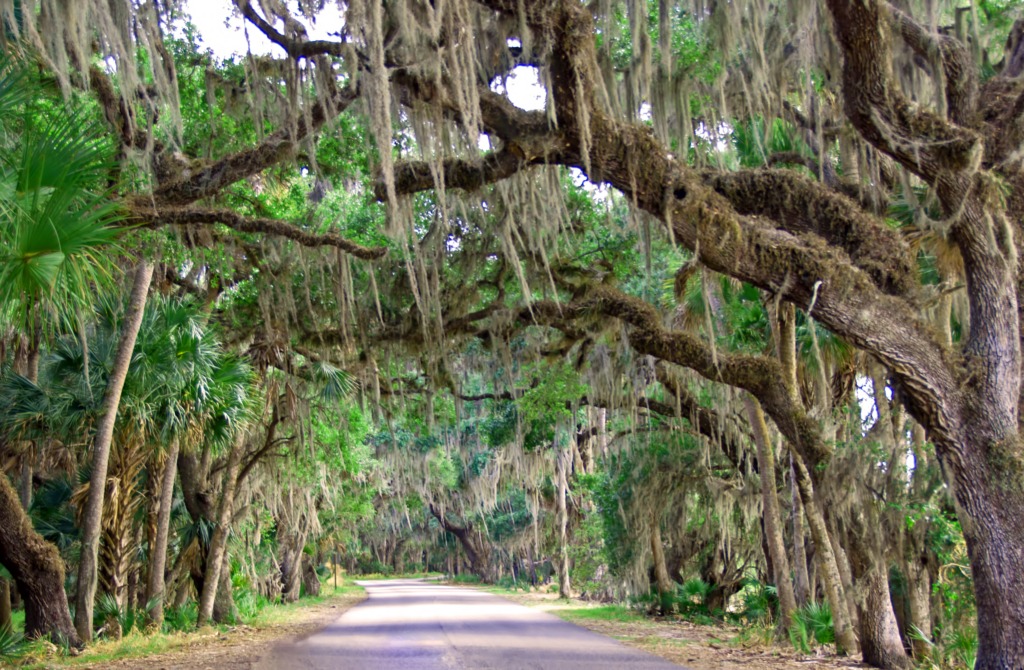
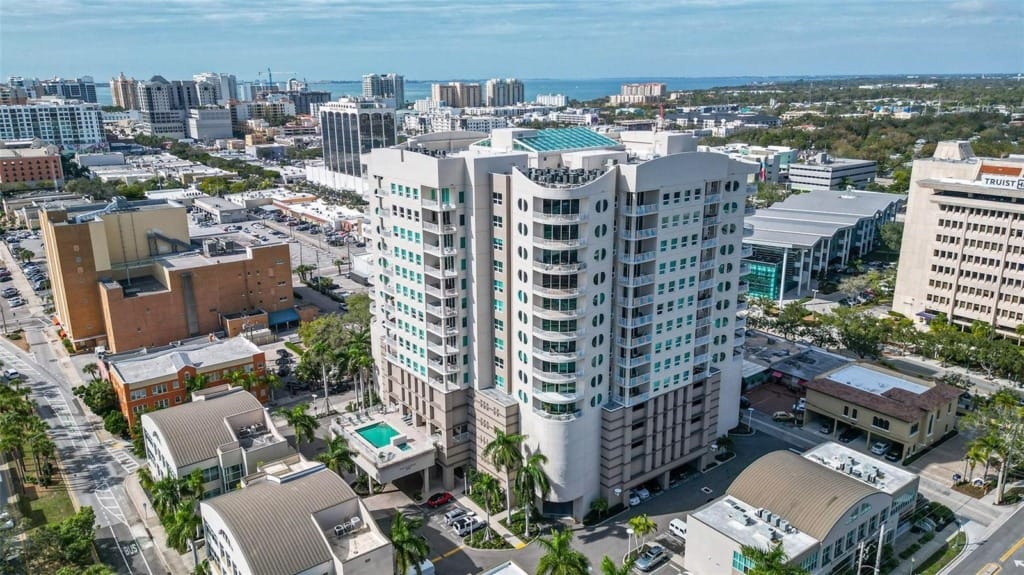
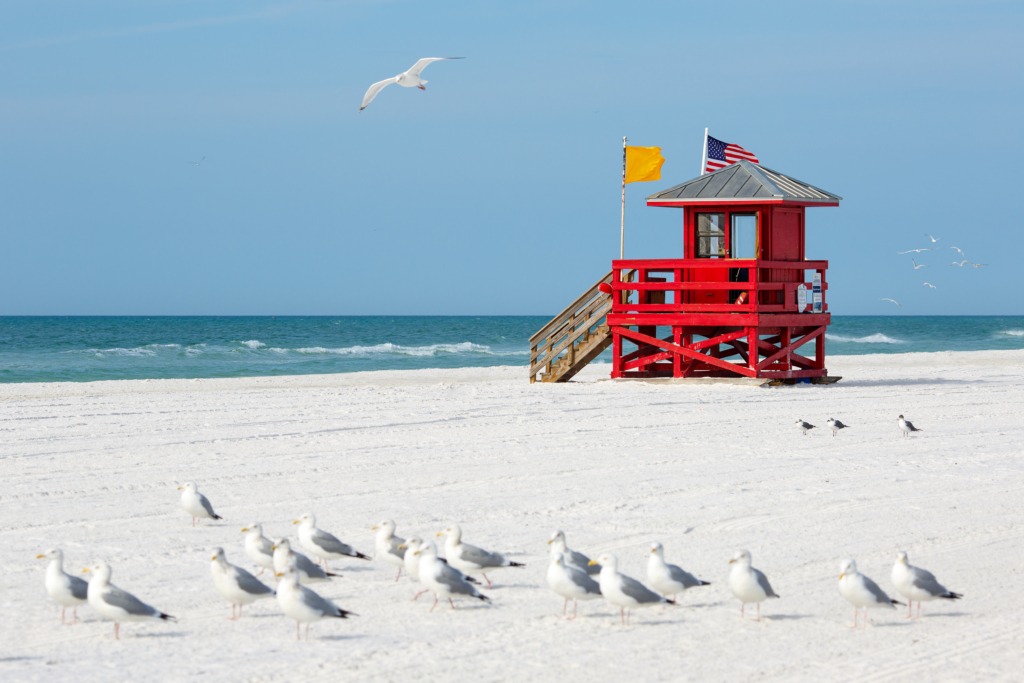
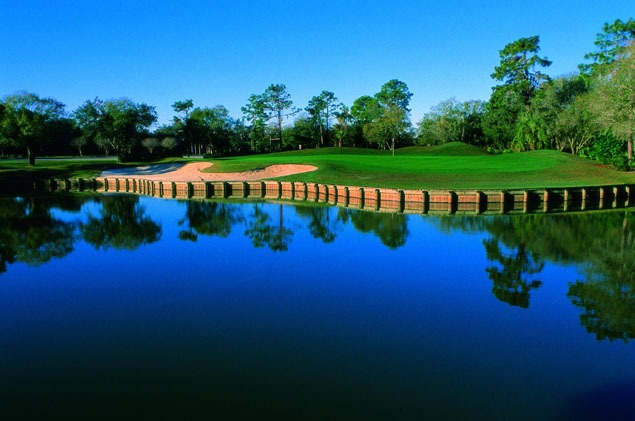
Golf Course Properties
Golf enthusiasts will feel right at home in Sarasota’s premier golf communities. Neighborhoods like The Founders Club and Laurel Oak offer homes with stunning fairway views and access to championship courses. These properties combine luxury living with an active lifestyle.
Affordable Starter Homes
First-time buyers will find plenty of options among the homes for sale in Sarasota, Florida. Areas like South Gate & Sarasota Springs provide charming bungalows and ranch-style homes at accessible price points, perfect for young professionals or small families entering the market.
No matter your vision, our team is dedicated to helping you find the perfect home for sale in Sarasota, FL that matches your needs and lifestyle.
Navigating the Sarasota Real Estate Market
Buying a home can feel overwhelming, but our experienced real estate team is here to simplify the process. We specialize in helping prospective buyers find homes for sale in Sarasota, Florida that align with their goals. Here’s how we support you:
- Personalized Property Matches: Tell us your preferences—budget, location, size—and we’ll curate a list of homes tailored to your needs.
- Local Expertise: We know Sarasota inside and out, from hidden-gem neighborhoods to up-and-coming developments.
- Seamless Tours: Schedule in-person or virtual tours of homes for sale in Sarasota at your convenience.
- Negotiation & Closing Support: We’ll advocate for you to secure the best deal and guide you through every step of the closing process.
With our comprehensive tools and dedicated service, finding your perfect Sarasota home has never been easier.
Popular Sarasota Neighborhoods to Explore
Sarasota neighborhoods each offer a unique vibe, ensuring there’s a perfect fit for every buyer. Here are a few standout areas to consider when browsing homes for sale in Sarasota:
- Siesta Key: Famous for its award-winning beach, Siesta Key features stunning waterfront homes and cozy cottages ideal for beach lovers.
- Longboat Key: A serene island escape with luxury estates and condos, perfect for those seeking exclusivity.
- Palmer Ranch: A master-planned community with modern homes, golf courses, and family-friendly amenities.
- Downtown Sarasota: Urban living at its finest, with condos and townhomes steps from cultural hotspots.
- Lakewood Ranch: A fast-growing area with top schools, new construction homes, and resort-style facilities.
Each neighborhood offers distinct advantages, and we’re here to help you discover the one that feels like home.
Start Your Sarasota Home Search Today
Your dream home in Sarasota, Florida is waiting. With our extensive listings of homes for sale in Sarasota, you can explore properties that match your vision and budget. Use our user-friendly search tools to filter by price, location, and features, or connect with our team for a more personalized recommendation based on your criteria.
Don’t let the opportunity to own a Sarasota home pass you by. Contact us today to begin your journey to homeownership in this vibrant coastal city.
Call 941-376-4580 or complete our online form to schedule a consultation and tour available homes in Sarasota, FL!
Frequently Asked Questions
1. Why Should I Use a Realtor® When Buying a Home?
A Realtor® brings expertise, market knowledge, and negotiation skills to the home-buying process. We help you find properties that match your specific needs, we guide you through the complex paperwork, and we advocate for your interests during negotiations, potentially saving you time and money.
2. How Much Does it Cost to Use a Realtor® as a Buyer?
In just about all cases, the Buyer’s Real Estate Agent is compensated by the seller’s Real Estate Broker through a commission split agreed upon prior to the property being listed in the MLS. Most if not all real estate companies still charge a nominal transaction fee for processing the transaction paperwork. However, it’s important to confirm this in your Buyer Agent Agreement, as terms can vary.
3. What is a Buyer Agent Agreement, and do I Need One?
A Buyer Agent Agreement is a contract outlining the agent responsibilities, compensation framework, and the duration of your working relationship. (As of August 2024 it is required of all Buyer Agents to have a signed Agreement with a Buyer before showing them a property, or face a $500 fine.) Review it carefully to understand your obligations before signing.
4. What Does a Realtor® do That I Can’t do Myself?
A Realtor® has access to the Multiple Listing Service (MLS) database; tons of market data metrics, and industry connections that are not readily available to the public. They can point you to appropriate lenders, insurers, contractors, inspectors and closing agents; identify and parse through specifically detailed & available properties; streamline the scheduling of showings (timing is important for some properties); provide pricing, property and community insights; confidently negotiate contracts; and coordinate with lenders, inspectors, surveyors, appraisers, title agents, utility companies, contractors and attorneys to ensure a smooth transaction.
5. Can I Buy a Home Without a Realtor®?
Yes, you can buy a home without a Realtor®, but it requires handling all of the complexities of the transaction yourself. A realtor’s expertise will reduce financial and transactional risks, point you in the right direction on all tranactional fronts, most likely save you tens of thousands of dollars through negotiations and lender reccomendations, and streamline the process, all while looking out for your best interests. It is in their best interest to do so – their reputation and return business from clients and referrals is the lifeblood of a Realtor®. Also, this is the largest purchase you may ever make. Do you really want to go at it without your own representation?
6. Can a Realtor® Help me Find Homes That Fit my Budget?
Yes, this is especially important if taxes, insurance and HOA payments are to be considered as a part of your pre-approval process. 3rd party websites do not account for your budget when searching for an available property. A Realtor® can filter listings based on your budget and preferences, ensuring you focus on homes you are capable of purchasing. They can also connect you with lenders to get you pre-approved, giving you a clear picture of your purchasing power.
7. What Paperwork And Legal Requirements Are Involved?
Buying a home involves legal contracts, disclosures, as well as Federal and State regulations. We guide you through preparing the purchase agreement, appropriate disclosures, and all required forms.
8. What Happens During The Negotiation Process?
We work closely with you to create the purchase contract based on price and terms you decide to offer. The offer will be presented to the seller via their agent shortly thereafter. We negotiate on your behalf to secure you the best deal possible. We advise you throughout the entire process.
9. Can a Realtor® Help With New Construction Homes?
Yes, a Realtor® can help you find a new construction community that matches your lifestyle as well as guide you when buying a new construction home, negotiating with builders, reviewing contracts, and ensuring upgrades or warranties are clearly outlined. They can also help you avoid pitfalls specific to new builds.
10. Can a Realtor® Help With For Sale By Owner Homes?
Yes, a Realtor® can help you with For Sale By Owner properties as well. Even though the owner is not using a Real Estate Agent to sell the property, most still offer to pay the Agent’s compensation. The Agent compensation can also be negotiated into the contract if not.
11. What Should I Expect At Closing?
At closing you will sign the final paperwork, including the settlement statement, closing agent disclosures and lender paperwork, if necessary. The closing agent will then file the official Deed (signed by seller) with the county which transfers the title of the property into your name. Don’t forget to bring an ID. We coordinate with the attorney or title company to make sure everyone knows where to be and at what time.
12. What Do I Do After Closing?
You will receive all available keys and copies of closing documents. You can now breathe a sigh of relief, start moving in and plan a house warming party so your friends can buy you stuff you never knew you needed! Congratulations!
Get in Touch with Us Today

ALEX MOREL, REALTOR®
Meet Alex, a Sarasota native with over 40 years of local knowledge and 15 years of experience as a licensed Realtor®. Growing up in a family of home builders and spending a decade in engineering, Alex combines technical expertise with a personalized approach to real estate. Serving Sarasota, Manatee, and Charlotte counties, Alex is dedicated to making your home buying or selling journey seamless and successful.
- Licensed Realtor® since 2010
- Specializes in Residential Real Estate in Sarasota Florida
- Representative For Both Buyers & Sellers
- Member of National, Florida & Sarasota Association of Realtors
- Served on Sarasota Board of Realtors Committee's between 2019-2021
What Our Clients Are Saying
Real Stories, Real Success: Hear from Happy Homeowners
Trustindex verifies that the original source of the review is Google. My partner and I met Alex by chance after a not so great experience with a different Realtor and we couldn’t be more grateful that we did. He is extremely knowledgeable about the home buying process and everything in between. He truly is the best of the best and we will only go to him for any future endeavors. Thank you for all of your hard work Alex!! Happy Holidays! 😊Trustindex verifies that the original source of the review is Google. Alex Morel, was very respectful on a delicate sale. We look forward to working with him again real soon on other properties. Thank you so much for all your help.Trustindex verifies that the original source of the review is Google. We were new to the area and needed guidance in regards to areas and communities. Alex helped us narrow down areas of interest with the vast amount of knowledge he has in the Sarasota area and surrounding. He also was an expert negotiator and was able to help us negotiate a great price for the home. Alex is always very responsive and because of his expertise and fast response we were able to secure the home. He helped us navigate the transaction smoothly and with an amazing attitude and friendly nature. We are very happy we chose to work with Alex and he made the process seamless and we are very happy and excited with our purchase.Trustindex verifies that the original source of the review is Google. Alex is an outstanding realtor & person! We were impressed with him on our first conversation & felt that we could trust him implicitly. We found out quickly just how reliable & hard working he is! He answered our numerous questions almost daily and has surrounded himself with competent experts…the home inspector & attorney specifically. We recommend Alex highly!Trustindex verifies that the original source of the review is Google. I am closing today on my first Florida property. Alex has guided me the whole way. He is professional, knowledgeable, calm, and communicates clearly. He will most definitely be my go-to for my next real estate transaction. I highly recommend Alex!
Alex Morel, Realtor®
Why Buy a Home or Condo in Sarasota With Us?
- Local expertise with in-depth market knowledge.
- Background in residential construction and engineering.
- We specialize in negotiating the best deal for our client.
- We represent you, not the seller.
- Exclusive access to all listings – existing, new and FSBO.
- Seamless process – stress-free buying with expert guidance.
- Personalized service – we match you with your perfect lifestyle.

Alex Morel, Realtor®
Alex will help you navigate the market and find the perfect home that meets your desires.
Start your journey today - fill out the form and let us do the rest!
Sarasota Weather
Sarasota, Florida, experiences a humid subtropical climate characterized by hot, humid summers and mild, dry winters.
Spring (March – May): Expect temperatures to range from the mid-60s°F (18°C) at night to the low-to-mid 80s°F (27-29°C) during the day. Humidity starts to rise, and rainfall increases toward May, averaging about 3-4 inches monthly, with occasional thunderstorms.
Summer (June – September): Summers are hot and wet, with highs often reaching the low 90s°F (32-34°C) and high humidity making it feel hotter (heat index can exceed 100°F). This is the rainy season, with frequent afternoon thunderstorms and an average of 6-10 inches of rain per month. Hurricane season peaks from August to September, so tropical activity could impact Sarasota.
Fall (October – November): Temperatures cool slightly to the upper 70s°F to mid-80s°F (25-29°C), with lower humidity and less rain (2-3 inches monthly). This is a pleasant time weather-wise.
Winter (December – February): Mild and dry, with daytime highs in the low-to-mid 70s°F (21-24°C) and lows in the 50s°F (10-15°C). Rainfall is minimal (around 2 inches monthly), and cold fronts may occasionally dip temps lower, but snow is extremely rare.
Sarasota averages about 250 sunny days per year, with roughly 61 inches of annual rainfall, most concentrated in summer.
Wind: 8mph W
Humidity: 65%
Pressure: 30.11"Hg
UV index: 11
91°F
90°F
91°F
91°F
90°F / 77°F
88°F / 75°F
90°F / 77°F
91°F / 77°F
Sarasota Attractions and Adventures
30 Top Things to do in Sarasota
- Visit Siesta Key Beach – Enjoy one of the finest beaches in the world, known for its soft, white quartz sand and clear blue waters, perfect for swimming, sunbathing, or a romantic sunset walk.
- Explore The John and Mable Ringling Museum of Art – Dive into Florida’s state art museum, featuring an extensive collection of European art, a circus museum, and the stunning Ca’ d’Zan mansion.
- Kayak through the Mangroves at Lido Key – Paddle through the serene mangrove tunnels at South Lido Nature Park, where you might spot manatees, dolphins, and various birds.
- Stroll St. Armands Circle – Shop, dine, and soak in the vibrant atmosphere of this upscale outdoor district, filled with boutiques, cafes, and tropical charm.
- Discover Myakka River State Park – Hike, bike, or take an airboat tour in one of Florida’s oldest and largest state parks, home to alligators, birds, and a canopy walkway.
- Experience Mote Marine Laboratory & Aquarium – Get up close with sharks, sea turtles, and manatees while learning about marine conservation through interactive exhibits.
- Wander Marie Selby Botanical Gardens – Admire rare orchids, bromeliads, and tropical plants in this lush downtown oasis, with beautiful views of Sarasota Bay.
- Feed Flamingos at Sarasota Jungle Gardens – Interact with flamingos, reptiles, and other animals in this historic, family-friendly attraction dating back to 1939.
- Catch a Show at the Sarasota Opera House – Enjoy a performance in this historic venue, part of Florida’s Cultural Coast, known for its world-class opera and architecture.
- Relax at Lido Beach – Spend a laid-back day on this quieter beach near St. Armands Circle, ideal for swimming, picnicking, or watching for dolphins.
- Bike the Legacy Trail – Ride this 18.5-mile paved trail stretching from Sarasota to Venice, perfect for cycling, walking, or enjoying scenic views.
- Go Fishing at Venice Pier – Cast a line off this 700-foot pier in nearby Venice, a hotspot for anglers and a great place to enjoy ocean views—no license required.
- Take a Sunset Cruise – Hop on a boat from Sarasota Bay for a relaxing evening cruise, often with dolphin sightings and stunning Gulf Coast sunsets.
- Visit Big Cat Habitat and Gulf Coast Sanctuary – See lions, tigers, bears, and other rescued animals at this nonprofit sanctuary offering educational shows and tours.
- Shop at the Sarasota Farmers Market – Browse local produce, crafts, and live music every Saturday morning in downtown Sarasota, a tradition since 1979.
- Paddleboard at Turtle Beach – Rent a paddleboard or kayak at this quieter Siesta Key spot, known for its calm waters and natural beauty.
- Explore the Circus Arts Conservatory – Catch a live circus performance or try a workshop at this local institution, celebrating Sarasota’s rich circus heritage.
- Visit Nathan Benderson Park – Row, kayak, or watch world-class rowing events at this 600-acre park with a 400-acre lake, trails, and picnic areas.
- Tour the Crowley Museum and Nature Center – Immerse yourself in Old Florida with pioneer history, wildlife, and boardwalk trails through wetlands and woods.
- Enjoy the Van Wezel Performing Arts Hall – Attend a concert, Broadway show, or comedy night at this iconic purple venue known as the “Jewel by the Bay.”
- Snorkel at Point of Rocks – Dive into the shallow waters off Siesta Key’s southern end to explore limestone formations teeming with tropical fish.
- Walk the Bayfront at Marina Jack – Stroll along Sarasota’s marina, dine with waterfront views, or rent a boat to explore the bay yourself.
- Hike Celery Fields – Birdwatch or climb the observation hill at this restored wetland, a haven for over 200 bird species and peaceful trails.
- Experience the Sarasota Ballet – See a professional ballet performance at the FSU Center for the Performing Arts, showcasing innovative choreography.
- Attend a Show at the Players Centre for Performing Arts – Enjoy local theater productions at one of Sarasota’s oldest community playhouses, known for its charm and talent.
- Explore the Sarasota Art Museum – Visit this contemporary art space housed in a historic 1920s high school, featuring rotating exhibits and creative workshops.
- Take a Segway Tour – Glide through downtown Sarasota or along the bayfront on a guided Segway adventure, blending fun with sightseeing.
- Visit the Warm Mineral Springs – Take a short drive to North Port to soak in Florida’s only natural warm spring, known for its healing waters and prehistoric significance.
- Relax at Caspersen Beach – Hunt for fossils or enjoy a quieter beach day at this Venice gem, known for its natural shoreline and shark tooth finds.
- Discover the Unconditional Surrender Statue at Bayfront Park – Snap a photo with this famous 26-foot sculpture of a sailor kissing a nurse, a tribute to the end of WWII.
These activities highlight Sarasota’s mix of natural beauty, cultural richness, and outdoor fun, making it a standout destination on Florida’s Gulf Coast.
Festivals Around Sarasota
Discover the Vibrant Festivals of Sarasota, Florida! Sarasota is a cultural hotspot bursting with festivals that celebrate art, music, food, film, and more. From sun-soaked beaches to charming downtown venues, there’s always a reason to gather and revel in the Gulf Coast’s lively spirit. Whether you’re a local or planning a visit, Sarasota’s festivals offer unforgettable experiences for all ages and interests. Dive into the fun and mark your calendar for these exciting events!
- Sarasota County Fair (March): A century-old tradition with carnival rides, fair food, livestock shows, and live entertainment honoring Sarasota’s circus heritage.
- Sarasota Film Festival (April): A 27th-year celebration of cinema with over 200 films, including features, documentaries, and shorts, plus celebrity guests and community events.
- Sarasota Music Festival Three weeks of world-class chamber music, featuring top artists and emerging talents from global conservatories.
- Sarasota Seafood & Music Festival (January): Fresh seafood, live music ranging from R&B to rock, and a festive atmosphere in downtown Sarasota
- Sarasota Medieval Fair (November): Step into 11th-century England with jousts, jesters, and artisan markets across four fun-filled weekends.
- Sarasota Jewish Food Festival (February): Savor traditional Jewish dishes like corned beef, matzo ball soup, and homemade pastries at Temple Sinai
- Sarasota Festival of the Arts: An outdoor gallery of paintings, sculptures, jewelry, and more by artisans from across the U.S.
- Venice Shark Tooth Festival (April): Celebrate Venice’s fossil-rich shores with vendors, music, and family-friendly activities
- Venice Italian Feast & Carnival (February): A vibrant celebration of Italian culture with authentic food, live entertainment, carnival rides, and family-friendly activities in nearby Venice.
- Sarasota Chalk Festival (November): A dazzling display of 3D street art where international artists transform pavement into vibrant masterpieces on Burns Square.
- Sarasota Jazz Festival (March): A week-long celebration of world-class jazz with artists like Marcus Miller, Emmet Cohen, and Terell Stafford, featuring main stage concerts at Sarasota Municipal Auditorium, a Jazz Trolley Pub Crawl, and more.
- Cortez Festival (February): Honors the fishing village’s heritage with seafood, nautical crafts, and live music.
- Crystal Classic International Sand Sculpting Festival (November): World-class sand sculptures take shape on Siesta Key Beach.
- Sarasota Water Lantern Festival : A magical evening of floating lanterns reflecting messages of hope at Nathan Benderson Park.
- Suncoast Scots Highland Games and Celtic Festival (February): Scottish heritage shines with Highland games, Celtic music, and clan gatherings at the Sarasota Fairgrounds.
History of Sarasota
Exploring the Rich History of Sarasota, Florida and Its Cultural Legacy
Sarasota, Florida, is more than just a sun-soaked paradise with pristine beaches and turquoise waters. Nestled along the Gulf Coast, this vibrant city boasts a fascinating history that stretches back thousands of years and a cultural heritage that has earned it the nickname “Florida’s Cultural Coast.” From ancient indigenous settlements to the influence of circus royalty and modern artistic flourishing, the history of Sarasota, Florida, and its cultural aspects weave a captivating story. Whether you’re a history buff, an art enthusiast, or simply planning a visit, this article dives deep into Sarasota’s past and the cultural treasures that define it today.
The Ancient Beginnings of Sarasota History
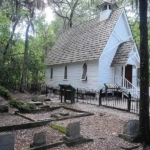
The history of Sarasota begins long before European explorers set foot on Florida’s shores. Archaeological evidence reveals that humans inhabited the region as far back as 12,000 years ago, drawn by the abundant natural resources of the Gulf Coast. Indigenous tribes like the Calusa, Tocobaga, and Timucuan thrived here, relying on fishing, hunting, and gathering to sustain their communities. One of the most remarkable remnants of this ancient Sarasota history is Historic Spanish Point in Osprey, where a massive shell midden offers a glimpse into 5,000 years of human activity. This site, one of the largest preserved archaeological treasures on Florida’s Gulf Coast, showcases the daily lives of these early inhabitants through artifacts like tools, pottery, and food remains.
As sea levels shifted over millennia, the Sarasota landscape evolved, but its appeal as a fertile, resource-rich area remained. By 500 B.C., the Manasota culture emerged, followed by the Safety Harbor culture around 900 A.D. These groups left behind temple mounds and burial sites, some of which were lost to 20th-century development. Today, places like the Bishop Museum of Science and Nature in nearby Bradenton preserve this prehistoric legacy, offering visitors a chance to explore Sarasota’s ancient roots through fossils, artifacts, and exhibits.

SaraDeSoto Pageant
Spanish Exploration and Early Settlement
The written history of Sarasota, Florida, takes shape with the arrival of Spanish explorers in the 16th century. In 1539, Hernando de Soto landed near Tampa Bay, and while his exact path through Sarasota remains debated, his influence is tied to the area’s name. Some suggest “Sarasota” derives from “Zara Soto,” possibly meaning “Radiance of Soto” in Arabic-influenced Spanish, though other spellings like “Zarazote” appear on early maps from 1763. During this period, Spanish fishermen from Cuba established “ranchos” along Sarasota Bay, trading fish and turtles with Havana merchants.
After Florida became a U.S. territory in 1821, European-American settlers began trickling in. The first permanent settler of note, William H. Whitaker, arrived in the 1840s, establishing a homestead on Sarasota Bay. His legacy lives on in Whitaker Bayou, named in his honor. However, it wasn’t until the late 19th century that Sarasota’s transformation into a modern town began, spurred by a Scottish visionary.

William H Whitaker
The Birth of Modern Sarasota: J.H. Gillespie’s Vision
In 1885, John Hamilton Gillespie arrived from Scotland, tasked with reviving the failing Ormiston Colony—a settlement of 60 Scottish families promised a tropical paradise but met with untamed wilderness.

John H Gillespie
Sent by the Florida Mortgage and Investment Company, Gillespie laid the groundwork for modern Sarasota history. He built the DeSoto Hotel in 1887, Sarasota’s first, and introduced golf to Florida by constructing the state’s first golf course in 1904. Today, his legacy endures in downtown Sarasota’s Five Points area and the many golf courses that dot the region.
Gillespie’s efforts attracted more settlers, and by 1902, Sarasota was incorporated as a town, becoming a city in 1913. The Seaboard Railroad’s extension to Sarasota in 1902 further fueled growth, connecting the fishing village to larger markets. Yet, it was the arrival of influential figures like Bertha Palmer and John Ringling that catapulted Sarasota into a cultural and economic hub.
Bertha Palmer and the Rise of Sarasota’s Elite

Bertha Honore Palmer
In 1910, Bertha Honoré Palmer, widow of Chicago magnate Potter Palmer, purchased vast tracts of land—up to 140,000 acres—in and around Sarasota. Her vision transformed the area into a fashionable winter retreat for America’s wealthy elite. Palmer’s estate at Historic Spanish Point became a symbol of luxury, while her Meadowsweet Pastures ranch (now Myakka River State Park) showcased her agricultural prowess. Her influence drew high society to Sarasota, cementing its reputation as a destination for the well-heeled and sparking a development boom.
Palmer’s legacy is still palpable today. Visitors can tour Historic Spanish Point to experience her opulent gardens and learn about her role in shaping Sarasota’s early 20th-century identity. Her investments paved the way for the cultural richness that would soon define the city.
John Ringling and the Circus City Legacy
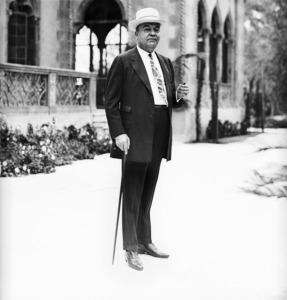
No discussion of Sarasota history and culture is complete without John Ringling, the circus magnate who left an indelible mark on the city. In 1927, Ringling moved the Ringling Bros. and Barnum & Bailey Circus winter headquarters to Sarasota, earning it the title “Circus City.” His Venetian-inspired mansion, Cà d’Zan, and the John and Mable Ringling Museum of Art became cultural landmarks, housing an extraordinary collection of Renaissance and Baroque masterpieces acquired during his European travels.
Ringling’s influence extended beyond the circus. He developed St. Armands Key and built the Ringling Causeway, connecting the mainland to the barrier islands. Though the Florida Land Boom collapse and the Great Depression left him financially strained—he died in 1936 with just $300 to his name—his contributions endure. The Ringling Museum remains a cornerstone of Sarasota’s cultural scene, while the Circus Arts Conservatory and Sailor Circus keep the city’s circus heritage alive.
Sarasota’s Cultural Coast: A Modern Renaissance
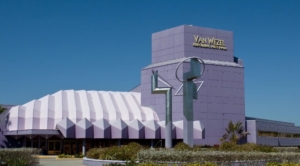
By the mid-20th century, Sarasota had blossomed into Florida’s Cultural Coast, a reputation bolstered by its thriving arts community. The Sarasota Orchestra, founded in 1949, is the state’s oldest continuing orchestra, offering over 100 concerts annually. The Asolo Repertory Theatre, established in 1960, has launched countless Broadway careers, while the Sarasota Opera made history with a 28-year run of Giuseppe Verdi’s complete works—a feat unmatched globally.
The Van Wezel Performing Arts Hall, built in the 1960s, hosts everything from Broadway shows to local acts, and the Florida Studio Theatre’s five stages deliver diverse, cutting-edge performances. Art lovers flock to the Sarasota Art Museum and galleries like Clyde Butcher’s Venice Studio, where black-and-white photography captures Florida’s wild beauty. Community theaters like the Venice Theatre and Westcoast Black Theatre Troupe further enrich the cultural tapestry, showcasing local talent and diversity.
Sarasota Today: A Blend of History and Culture

Burns Court
Today, Sarasota seamlessly blends its storied past with a vibrant present. Historic districts like Burns Court and Gillespie Park preserve architectural gems, while Siesta Key’s beaches draw global acclaim. The city’s commitment to the arts—evident in venues like Art Center Sarasota and events like the Fabulous Arts Foundation’s annual festival—ensures its cultural legacy thrives.
For visitors, Sarasota offers a chance to step back in time at sites like the Ringling Museum or Historic Spanish Point, then immerse themselves in modern creativity at a theater or gallery. This duality—history and culture intertwined—makes Sarasota, Florida, a must-visit destination.

Ringling Museum
Plan Your Journey Through Sarasota’s History and Culture
Ready to explore the history of Sarasota, Florida, and its cultural aspects firsthand? Start with a visit to the Ringling Museum, then stroll through Historic Spanish Point. Catch a show at the Van Wezel or Sarasota Opera House, and don’t miss the chance to hunt for fossilized shark teeth in Venice, the “Shark Tooth Capital of the World.” Whether you’re drawn by ancient artifacts, circus lore, or world-class performances, Sarasota’s rich heritage awaits.

Discover why Sarasota’s past continues to shape its present—and why it’s truly Florida’s Cultural Coast.
Demographics in Sarasota
Sarasota’s Population: A Growing Coastal Hub
Age Dynamics: A Haven for Retirees and Young Professionals
Sarasota is renowned as a retiree’s paradise, with a median age of 57.3 years in the county and 49.3 years in the city. Over 34.4% of Sarasota County’s population is 65 or older, ranking it among Florida’s top counties for seniors. Wealthy retirees fuel philanthropy, entrepreneurship, and volunteerism, making Sarasota a leader in Florida retirement destinations and Sarasota senior living.
But don’t let the silver hair fool you—Sarasota is also attracting younger residents. The city’s median age is nearly a decade younger than the county’s, with 20.6% of residents moving annually, including families and professionals drawn to job opportunities in healthcare (employing 27,520 people county-wide), retail (22,919), and construction (16,862). For those searching Sarasota FL young professionals or family-friendly cities in Florida, Sarasota delivers a balanced lifestyle with top schools, cultural venues, and outdoor recreation.
Economic Opportunity and Income Insights
Sarasota’s economy is a powerhouse, with a median household income of $80,633 in the county and $70,065 in the city. The county’s per capita income stands at $46,465, while the city’s average household income reaches an impressive $127,400. These figures reflect a prosperous community, ideal for businesses targeting Sarasota FL affluent residents or high-income areas in Florida.
Despite this wealth, Sarasota remains accessible, with 8.19% of county families and 14.34% of city families living below the poverty line. This economic diversity underscores the need for inclusive planning, from affordable housing to upscale developments, catering to those searching Sarasota cost of living or Florida economic trends.
Why Sarasota? Lifestyle and Opportunity Await
Sarasota isn’t just numbers—it’s a lifestyle. From the white sands of Siesta Key to the cultural gems like Sarasota Opera and Asolo Repertory Theatre, this city blends relaxation with sophistication. Its 24.5-minute average commute and 76.3% homeownership rate in the county make it a practical choice for families and professionals. For those searching Sarasota FL lifestyle or best coastal cities in Florida, Sarasota shines.
The city’s demographic trends signal opportunity. Retirees bring wealth and stability, while younger residents drive innovation. Multicultural growth ensures a dynamic future, perfect for businesses eyeing Sarasota market expansion or Florida demographic trends.
Make Sarasota Your Home
Ready to join Sarasota’s thriving community? Whether you’re a retiree seeking sunny shores, a family looking for top schools, or a business targeting a diverse market, Sarasota welcomes you. Explore homes with median values of $373,100 in the county or $409,700 in the city, and discover why Sarasota is a top pick for Florida real estate.
Contact us today to learn more about living in Sarasota, FL, or to tap into its booming market. Don’t miss out on the Sunshine State’s best-kept secret—Sarasota is calling!
Education in Sarasota
Discover Sarasota, Florida: Top Schools and Family-Friendly Neighborhoods for Your New Home
Welcome to Sarasota, Florida—a coastal paradise where white-sand beaches, cultural vibrancy, and exceptional education create the perfect environment for families. If you’re a prospective family looking to purchase a home in a top-tier school zone, Sarasota delivers outstanding public and private schools, safe neighborhoods, and a lifestyle that nurtures growth. This section explores why Sarasota is a top choice for families prioritizing education, featuring its best schools, complete lists of public and private schools in Sarasota County, prime neighborhoods, and tips for finding your dream home in a great school district.
Why Choose Sarasota for Your Family’s Future?
Sarasota County Schools, serving over 45,000 students across 62 public schools, have earned an A-grade from the Florida Department of Education since 2004, ranking among Florida’s best districts. Beyond public options, Sarasota boasts over 40 private schools, offering specialized curricula, smaller class sizes, and faith-based or Montessori approaches. For relocating families, this blend of academic excellence, low crime rates, and attractions like Siesta Key Beach makes Sarasota a dream destination. Whether you prefer public, private, or charter schools, Sarasota’s diverse educational landscape pairs with a real estate market featuring affordable suburbs to luxurious waterfront estates, all zoned for quality education.
Top Schools in Sarasota: A Closer Look
School zones drive home-buying decisions. Here are some of Sarasota’s standout schools, highlighting both public and private options for families seeking excellence:
Pine View School (Public)
- Location: Osprey, FL
- Grades: 2–12
- Why It Stands Out: Ranked #1 public high school in Florida and #18 nationally by U.S. News & World Report in 2024, Pine View is a magnet for gifted students. Its rigorous curriculum, independent study, and 100% graduation rate prepare students for top universities.
- Ideal Neighborhoods: Osprey, Laurel, Nokomis (homes: $400,000–$2M+).
The Out-of-Door Academy (Private)
- Location: Sarasota, FL
- Grades: PK–12
- Why It Stands Out: A top private school with an A+ Niche grade, ODA offers personalized education, state-of-the-art facilities, and strong arts and athletics. Average tuition is ~$18,000, with 885 students and a 10:1 student-teacher ratio.
- Ideal Neighborhoods: Siesta Key, Southside (homes: $600,000–$3M).
Suncoast Polytechnical High School (Public)
- Location: Sarasota, FL
- Grades: 9–12
- Why It Stands Out: Ranked #37 in Florida, this career-focused school emphasizes engineering, health sciences, and IT, with a tight-knit community (~585 students).
- Ideal Neighborhoods: Gulf Gate, Palmer Ranch (homes: $350,000–$600,000).
Cardinal Mooney Catholic High School (Private)
- Location: Sarasota, FL
- Grades: 9–12
- Why It Stands Out: Known for its Catholic values and college-prep focus, Cardinal Mooney serves 554 students with a 4-star Niche rating. Tuition averages ~$12,000.
- Ideal Neighborhoods: Bee Ridge, Palmer Ranch (homes: $400,000–$1M).
Ashton Elementary School (Public)
- Location: Sarasota, FL
- Grades: K–5
- Why It Stands Out: With a 9/10 GreatSchools rating, Ashton excels in STEM, arts, and a nurturing environment for young learners.
- Ideal Neighborhoods: Palmer Ranch, Prestancia (homes: $300,000–$800,000).
Complete List of Public Schools in Sarasota County
Sarasota County Schools operate 62 public schools, including elementary, middle, high, combination, charter, alternative, and virtual options. Below is a full list to help families match homes to school zones (sourced from www.sarasotacountyschools.net).
Elementary Schools (23)
- Alta Vista Elementary – Sarasota
- Ashton Elementary – Sarasota
- Atwater Elementary – North Port
- Bay Haven School of Basics Plus – Sarasota
- Brentwood Elementary – Sarasota
- Cranberry Elementary – North Port
- Emma E. Booker Elementary – Sarasota
- Englewood Elementary – Englewood
- Fruitville Elementary – Sarasota
- Garden Elementary – Venice
- Glenallen Elementary – North Port
- Gocio Elementary – Sarasota
- Gulf Gate Elementary – Sarasota
- Lakeview Elementary – Sarasota
- Lamarque Elementary – North Port
- Laurel Nokomis School (K-8) – Nokomis
- Phillippi Shores Elementary – Sarasota
- Southside Elementary – Sarasota
- Tatum Ridge Elementary – Sarasota
- Taylor Ranch Elementary – Venice
- Toledo Blade Elementary – North Port
- Tuttle Elementary – Sarasota
- Venice Elementary – Venice
Middle Schools (7)
- Booker Middle School – Sarasota
- Brookside Middle School – Sarasota
- Heron Creek Middle School – North Port
- McIntosh Middle School – Sarasota
- Sarasota Middle School – Sarasota
- Venice Middle School – Venice
- Woodland Middle School – North Port
High Schools (6)
- Booker High School – Sarasota
- North Port High School – North Port
- Riverview High School – Sarasota
- Sarasota High School – Sarasota
- Suncoast Polytechnical High School – Sarasota
- Venice High School – Venice
Combination and Specialty Schools
- Pine View School (2–12, gifted) – Osprey
- Laurel Nokomis School (K-8) – Nokomis
- Oak Park School (special education, K-12) – Sarasota
Charter Schools (14)
- Dreamers Academy – Sarasota
- Imagine School at North Port (K-12) – North Port
- Imagine School at Palmer Ranch – Sarasota
- Island Village Montessori School – Venice
- Pinnacle Academy – Sarasota
- Sarasota Academy of the Arts – Sarasota
- Sarasota Military Academy (6-12) – Sarasota
- Sarasota School of Arts and Sciences (6-8) – Sarasota
- Sarasota Suncoast Academy – Sarasota
- Sky Academy Englewood – Englewood
- Sky Academy Venice – Venice
- State College of Florida Collegiate School – Venice
- Student Leadership Academy – Venice
- Suncoast School for Innovative Studies – Sarasota
Alternative and Virtual Schools
- Sarasota County Acceleration Academies – Sarasota
- Sarasota Virtual Academy (K-12) – Sarasota
- Triad (alternative) – Sarasota
Technical College
Complete List of Private Schools in Sarasota County
Sarasota County is home to over 40 private schools, offering faith-based, Montessori, college-prep, and special-needs programs. Below is a comprehensive list based on data from the Florida Department of Education, Private School Review, and Niche, helping families align home purchases with educational preferences. Note: Some schools may have multiple campuses or serve niche populations; contact schools directly for specifics.
- Achievement Center of Sarasota – Sarasota (6-12, 58 students, special needs focus)
- Agape Christian School of Sarasota – Sarasota (K-12, 53 students, Christian)
- Ascension Lutheran School – Sarasota (PK-8, 96 students, Lutheran)
- Beyond the Spectrum Education Center – Sarasota (PK-12, special needs, ~50 students)
- Brickhouse Academy – Sarasota (8-12, 20 students, college-prep)
- Calvary Chapel School – Sarasota (K-8, 116 students, Christian)
- Cardinal Mooney Catholic High School – Sarasota (9-12, 554 students, Catholic)
- Community Day School (Hershorin Schiff) – Sarasota (PK-8, 271 students, Jewish)
- Dreams Are Free Catholic School at Bishop Nevins – Sarasota (PK-8, ~100 students, Catholic)
- Easter Seals Academy – Sarasota (special needs, K-12, ~40 students)
- Elevation Preparatory Academy – Sarasota (9-12, 40 students, sports-focused)
- Epiphany Cathedral School – Venice (PK-8, ~200 students, Catholic)
- European Academy of Early Education – Nokomis (PK-1, 64 students, Montessori)
- Foundations Christian Montessori Academy – Sarasota (PK-8, ~150 students, Christian)
- Genesis Christian Academy – Englewood (K-12, ~100 students, Christian)
- Hope Presbyterian School – Venice (PK-8, ~50 students, Presbyterian)
- Incarnation Catholic School – Sarasota (PK-8, ~200 students, Catholic)
- Julie Rohr Academy – Sarasota (K-8, ~100 students, alternative)
- Kanner Academy – Sarasota (special needs, K-12, ~30 students)
- Liberty Baptist Academy – Sarasota (PK-12, ~50 students, Baptist)
- Liberty Christian Academy – Sarasota (K-12, ~100 students, Christian)
- Mangrove School of Sarasota – Sarasota (PK-8, 109 students, nature-based)
- Morningstar Learning Center – Sarasota (PK-8, ~60 students, Christian)
- NewGate School – Sarasota (PK-12, 185 students, Montessori)
- Palm Grove Mennonite School – Sarasota (K-12, ~50 students, Mennonite)
- Prew Academy – Sarasota (6-12, ~60 students, alternative)
- Providence Community School – Sarasota (PK-12, ~100 students, Christian hybrid)
- Saltmeadow School – Sarasota (1-11, 13 students, progressive)
- Sarasota Christian School – Sarasota (PK-12, ~400 students, Christian)
- Sarasota Lutheran School – Sarasota (PK-8, ~100 students, Lutheran)
- Sea of Strengths Academy – Sarasota (PK-5, ~50 students, special needs)
- St. Martha Catholic School – Sarasota (PK-8, ~300 students, Catholic)
- Sunnyside Mennonite School – Sarasota (K-11, ~30 students, Mennonite)
- Sunshine Christian Academy – Sarasota (PK-12, ~100 students, Christian)
- The Bridge Sarasota – Sarasota (K-12, ~50 students, homeschool co-op)
- The Classical Academy of Sarasota – Sarasota (K-12, ~300 students, classical)
- The Out-of-Door Academy – Sarasota (PK-12, 798 students, college-prep)
- Victory Baptist Academy – Osprey (K-12, 68 students, Baptist)
- Waldorf Sarasota – Sarasota (PK-5, ~100 students, Waldorf)
- West Florida Christian School – Sarasota (PK-5, ~50 students, Christian)
For the latest enrollment, tuition (~$10,698 average), or program details, visit www.floridaschoolchoice.org or contact schools directly.
Family-Friendly Neighborhoods Zoned for Great Schools
Sarasota’s neighborhoods align with top public and private schools, catering to varied budgets and lifestyles. Here are prime areas for homebuyers:
Osprey: Academic Excellence Meets Serenity
- School Zones: Pine View School (public), Victory Baptist Academy (private)
- Why Buy Here: Ideal for Pine View or private school families, Osprey offers waterfront homes and Oscar Scherer State Park.
- Home Prices: $400,000–$2.5M
- Amenities: Trails, kayaking, dining.
Gulf Gate: Affordable and Accessible
- School Zones: Gulf Gate Elementary (public), Mangrove School of Sarasota (private)
- Why Buy Here: Budget-friendly with Siesta Key nearby, perfect for young families.
- Home Prices: $250,000–$600,000
- Amenities: Library, shopping, parks.
Palmer Ranch: Suburban Comfort
- School Zones: Ashton Elementary, Riverview High (public), Cardinal Mooney (private)
- Why Buy Here: Master-planned with golf, trails, and access to top public/private schools.
- Home Prices: $300,000–$1M
- Amenities: Legacy Trail, YMCA, dining.
Southside Village: Historic Charm
- School Zones: Southside Elementary, Sarasota High (public), The Out-of-Door Academy (private)
- Why Buy Here: Walkable with historic charm, close to downtown and elite schools.
- Home Prices: $600,000–$2M
- Amenities: Morton’s Market, Selby Gardens, cafes.
Education Drives Home Value in Sarasota
Homes in top school zones—public like Pine View or private like The Out-of-Door Academy—appreciate faster, often fetching 10–20% higher prices due to demand. Sarasota’s schools foster community through science fairs, arts festivals, and sports, enhancing neighborhood appeal.
Tips for Buying a Home in Sarasota’s Best School Zones
- Verify School Zones: For public schools, check www.sarasotacountyschools.net; for private, contact school admissions.
- Hire a Local Realtor: We can align homes with schools like Ashton or Cardinal Mooney based on budget.
- Research Schools: Use GreatSchools.org (public) or Niche.com (private) for ratings. Pine View scores 10/10; ODA earns A+.
- Visit Campuses: Tour public schools like Riverview or private ones like NewGate to assess fit.
- Plan for Growth: Gulf Gate’s new constructions align with schools like Suncoast Polytechnical.
- Balance Needs: Southside offers prestige with ODA access, while Gulf Gate provides affordability near Gulf Gate Elementary.
Beyond Schools: Sarasota’s Family Appeal
Sarasota shines beyond education:
- Beaches: Siesta Key, ranked #1 in the U.S.
- Culture: Ringling Museum, Sarasota Opera, Van Wezel Performing Arts.
- Outdoor Fun: Myakka River State Park, Legacy Trail, playgrounds.
- Safety: Low crime and family-friendly communities.
Higher education thrives with New College of Florida and Ringling College of Art and Design, reinforcing Sarasota’s learning culture.
Start Your Sarasota Journey Today
Sarasota blends top public schools—like Pine View and Ashton—with elite private options like The Out-of-Door Academy and Cardinal Mooney, across 62 public and 40+ private institutions. Ready to find your home in a top school zone? Contact us today to explore listings near school district you prefer. Visit www.sarasotacountyschools.net for public school zones, www.floridaschoolchoice.org for private school details, or GreatSchools.org for ratings. Your Sarasota story begins here—where education, community, and coastal living unite.




































































